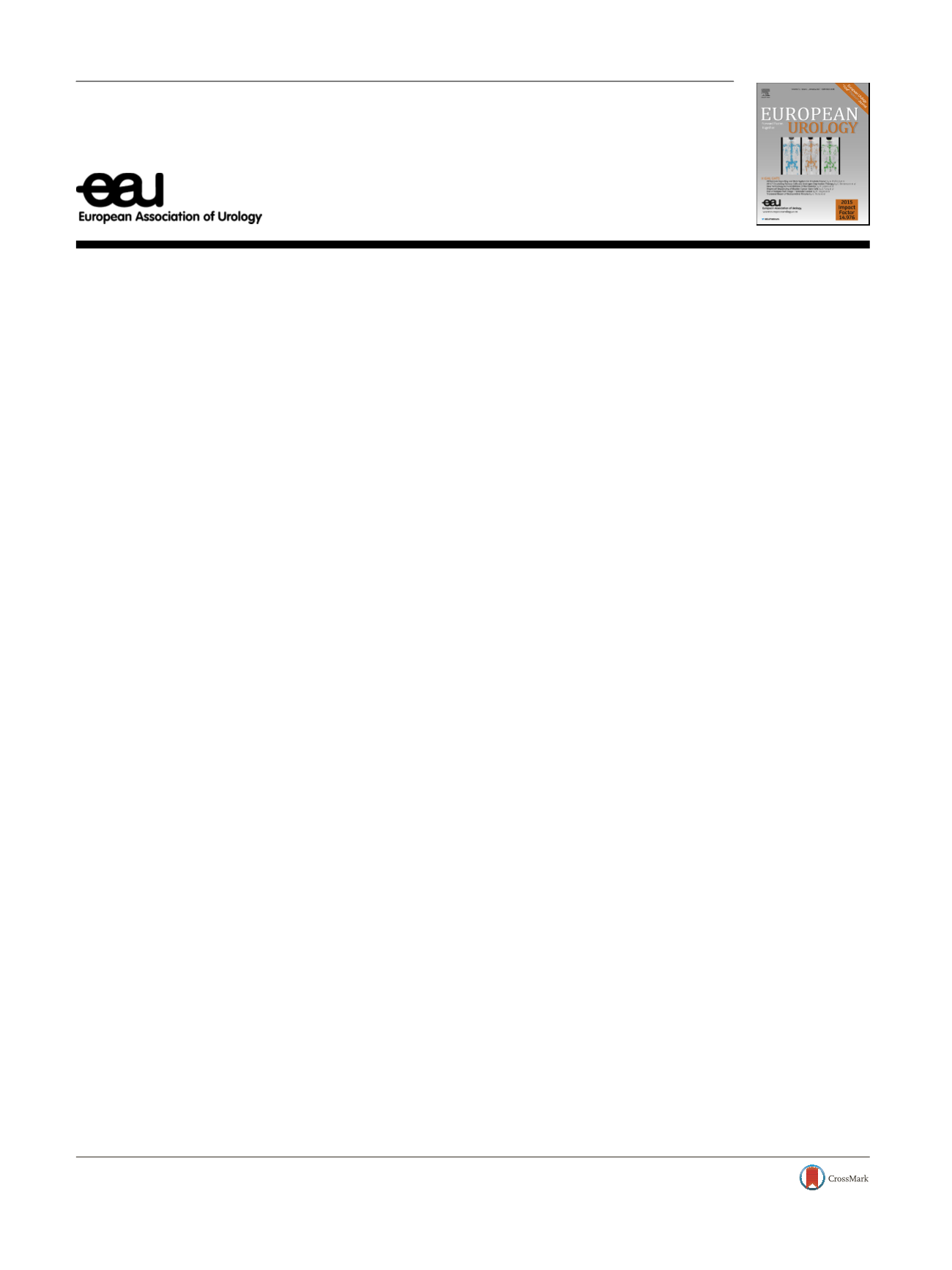

Letter to the Editor
Reply to Rodolfo Montironi, Silvia Gasparrini, Antonio
Lopez-Beltran, et al’s Letter to the Editor re: Umberto
Leone Roberti Maggiore, Simone Ferrero, Massimo
Candiani, et al. Bladder Endometriosis: A Systematic
Review of Pathogenesis, Diagnosis, Treatment, Impact
on Fertility, and Risk of Malignant Transformation.
Eur Urol 2017;71:790–807. Benign Mu¨ llerian Lesions
in the Urinary Bladder: Endometriosis, Endocervicosis,
Endosalpingiosis, and Mu¨ llerianosis
We thankMontironi and colleagues for their correspondence
commenting on our systematic review on bladder endome-
triosis
[1]
. The purpose of our manuscript was to systemati-
cally summarise the literature regarding the pathogenesis,
diagnosis, medical and surgical treatment, impact on female
fertility, and risk of malignant transformation of bladder
endometriosis, and to acquaint both gynaecologists and
urologists with this condition. We hope that our paper
represents a helpful tool for physicians in managing, in an
evidence-based way, bladder endometriosis. In our opinion,
referral of patients with a suspicion of bladder endometriosis
to specialised centres and collaboration between gynaecol-
ogists and urologists are desirable to offer patients the most
appropriate management for their condition.
For these reasons, we appreciate that our article also
offered an opportunity for scientific exchange on the two
categories, further deepening insight into malignant and
other benign lesions of the bladder, of which bladder
endometriosis is the most common and well known.
Conflicts of interest:
The authors have nothing to disclose.
Reference
[1]
Leone Roberti Maggiore U, Ferrero S, Candiani M, et al. Bladder endometriosis: a systematic review of pathogenesis, diagnosis, treatment, impact on fertility, and risk of malignant transformation. Eur Urol 2017;71:790–807.Umberto
[1_TD$DIFF]
Leone Roberti
[2_TD$DIFF]
Maggiore
a,b
Simone Ferrero
a,b,
*
Massimo Candiani
c
Edgardo Somigliana
d
Paola Vigano`
e
Paolo Vercellini
f
a
Academic Unit of Obstetrics and Gynaecology, IRCCS AOU San Martino – IST,
Genoa, Italy
b
Department of Neurosciences, Rehabilitation, Ophthalmology, Genetics,
Maternal and Child Health, University of Genoa, Genoa, Italy
c
Obstetrics and Gynaecology Unit, Vita-Salute San Raffaele University and
IRCCS San Raffaele Hospital, Milan, Italy
d
Obstetrics and Gynaecology Department, Fondazione Ca’ Granda, Ospedale
Maggiore Policlinico, Milan, Italy
e
Reproductive Sciences Laboratory, Division of Genetics and Cell Biology,
IRCCS San Raffaele Scientific Institute, Milan, Italy
f
Department of Women’s and Children’s Health, Universita` degli Studi and
Fondazione IRCCS Ca’ Granda Ospedale Maggiore Policlinico, Milan, Italy
*Corresponding author. Academic Unit of Obstetrics and Gynaecology,
IRCCS AOU San Martino – IST, Largo R. Benzi 10, 16132 Genoa, Italy.
Tel. +39 010 511525; Fax: +39 010 8932843.
E-mail address:
simoneferrero@me.com(S. Ferrero).
May 15, 2017
E U R O P E A N U R O L O G Y 7 2 ( 2 0 1 7 ) e 1 4 2available at
www.scienced irect.comjournal homepage:
www.europeanurology.comDOIs of original articles:
http://dx.doi.org/10.1016/j.eururo.2017.05.029 , http://dx.doi.org/10.1016/j.eururo.2016.12.015.
http://dx.doi.org/10.1016/j.eururo.2017.05.0280302-2838/
#
2017 European Association of Urology. Published by Elsevier B.V. All rights reserved.
















